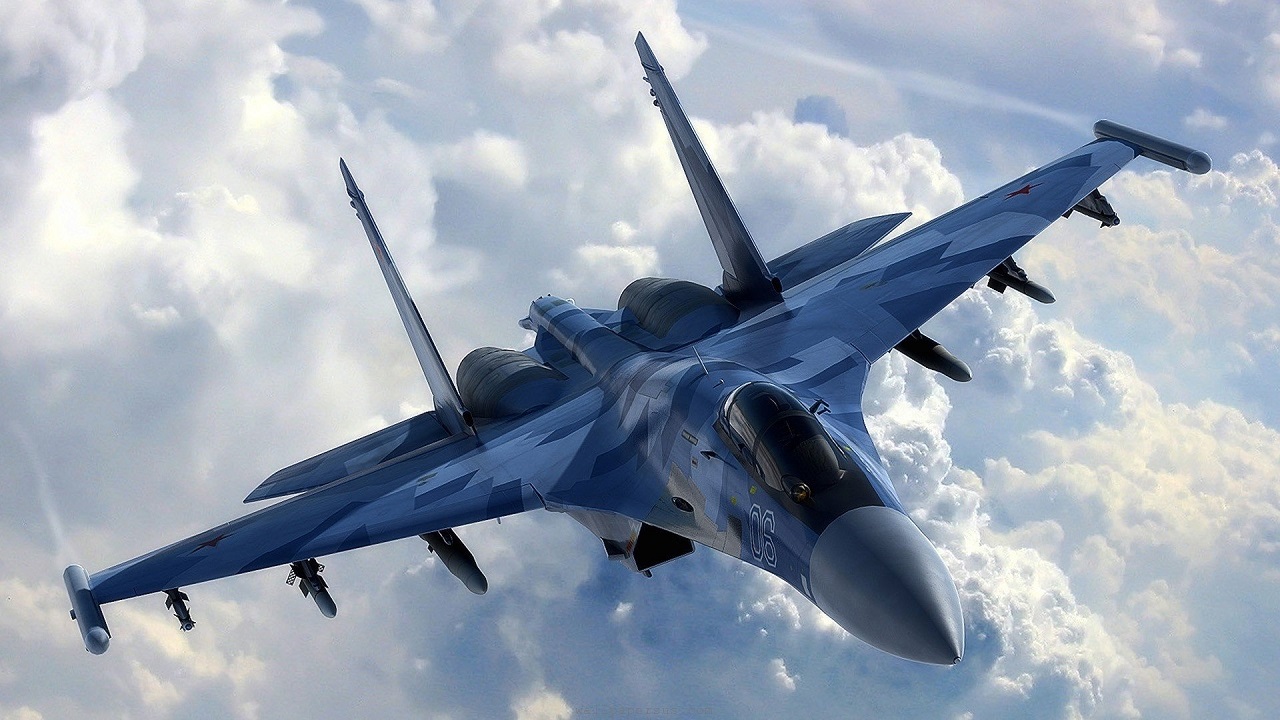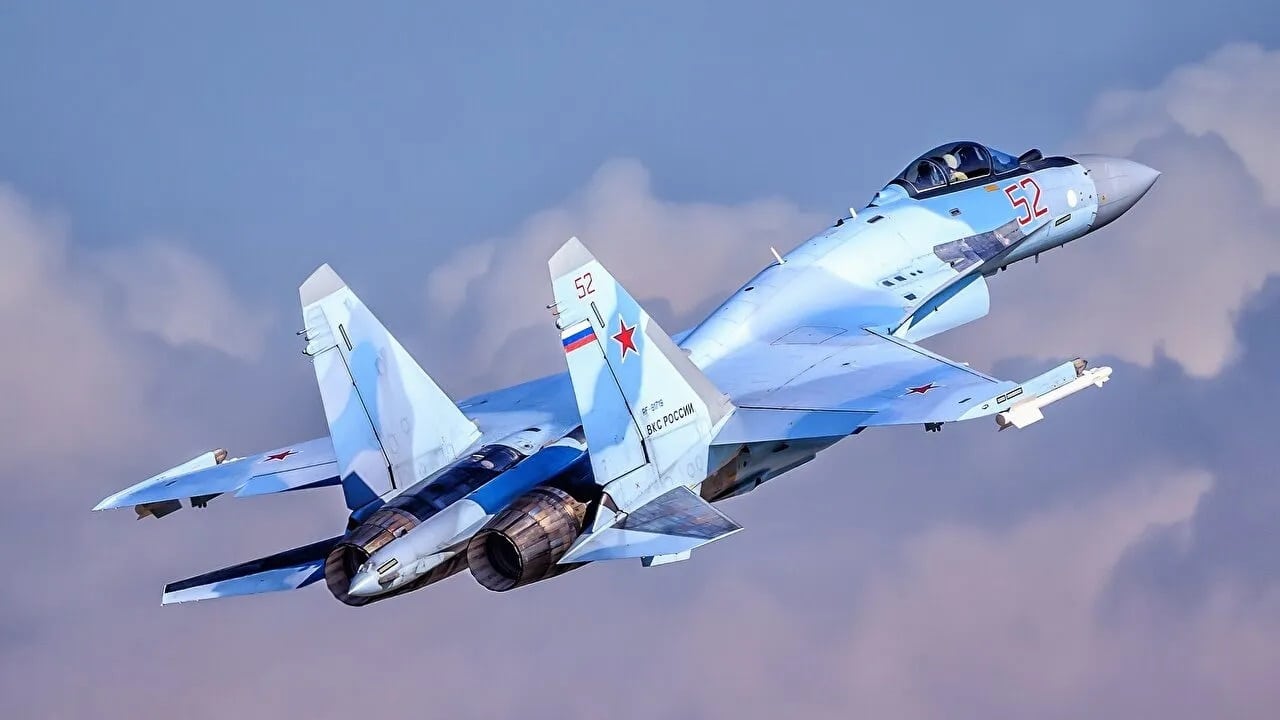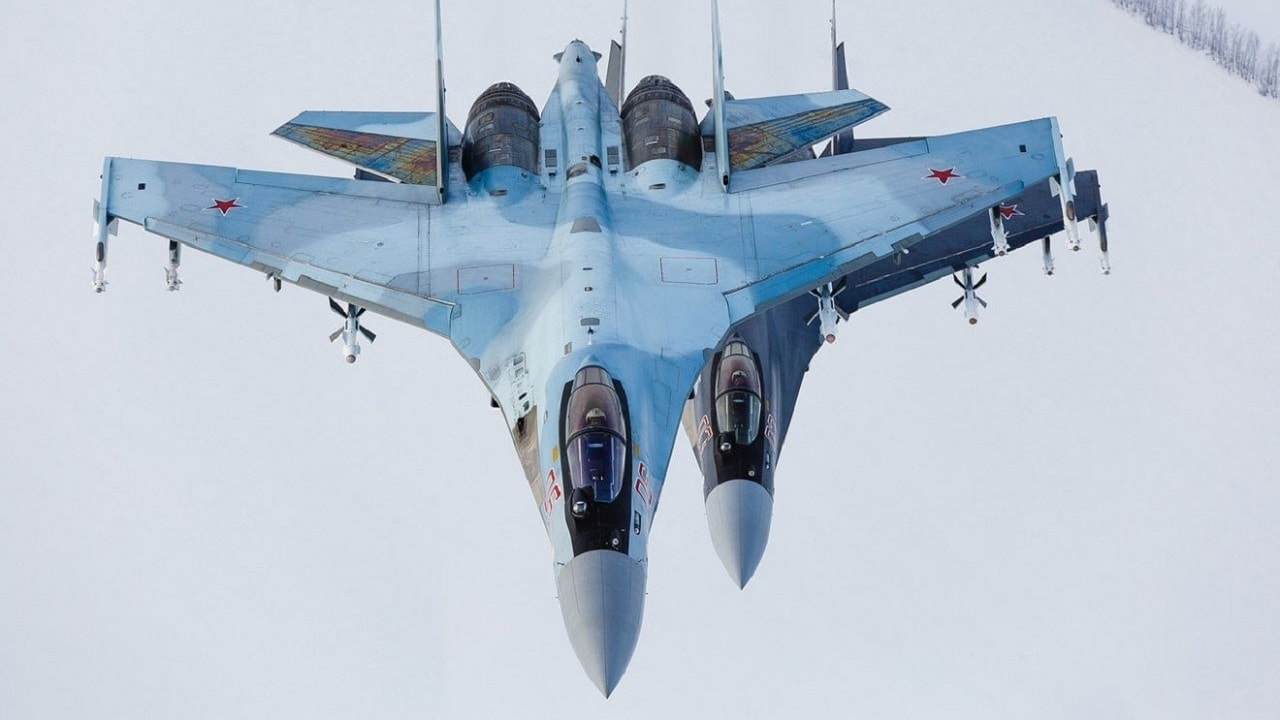The first time the world saw the Sukhoi Su-35 “Super Flanker” was in the early 1990s. At the beginning of the post-Cold War era, the aircraft followed the same evolutionary development path that almost all Soviet aircraft had passed through. What became known as the Su-35 in this time frame was initially designated as the Su-27M.
The “M” suffix is used with a model name for a Russian aircraft to denote a modernized version of an existing aircraft. That designation meant that the airframe was in the process of either being upgraded to the point where it was far advanced beyond its original configuration or when the aircraft was the prototype for the next-stage development of the base design of the aircraft that proceeded it.

Artist rendering of a Russian Su-35 fighter. Image Credit: Creative Commons.
An example of a design so comprehensibly modified from its original version so that it was practically a different aircraft would be the Tupolev Tu-22 BLINDER, later becoming the Tu-22M BACKFIRE. An example of an “M” designator being a prototype for a design iteration to the next generation would be how the Mikoyan MiG-25M was the precursor to the MiG-31 FOXHOUND.
About the time the Su-27M makes its first flight, the USSR’s defense industrial community is facing financial problems due to the impending collapse of the country as a nation-state. When the new and independent Russia inherits most of the former Soviet aerospace sector, the combat aircraft community receives almost no orders from the Russian Ministry of Defense and is thus desperate for sales to new export clients.
The “First” Su-35
Russia’s aircraft makers also observed what their US counterparts had become all too aware of. Export customers who would be interested in a brand-new, big, twin-engine fighter were long ago infected with what is known as the “Rolex mentality.”
“An aircraft that is labeled a higher number than the previous model that it still looks like always impresses a customer more than you telling him that this is a ‘new and improved’ version of the same aircraft with the same name that he has already seen,” said a retired US defense industry representative who explained the ins and outs of combat aircraft marketing to 19FortyFive.
“This is why the F-16 that is being marketed in India today is called the ‘F-21’, or how the Mirage 2000-5 that was sold to the UAE was re-branded as the ‘Mirage 2000-9’ or how the MiG-29 that has been marketed around the world is now the ‘MiG-35’,” he continued.
Only fourteen of these Su-27M aircraft were ever built. One of them was later equipped with a thrust vectoring control (TVC) module to test this innovation. That version was sometimes referred to as “Su-37.” Later in the 1990s, one two-seat Su-35UB was built as an aircraft that could be used to give check rides to potential customer nation representatives.
These first “Su-35s” were later re-designated Su-27M, formed into a single unit, and based at Kubinka aerodrome outside of Moscow. They became the only aircraft to use the moniker Su-27M and were used for the Russian Knights Russian Air Force (VVS) aerobatic demonstration team.

Russian Air Force Su-35. Image Credit: Creative Commons.
The aircraft not flown by the demo team were used as “hangar queens” as spares for this low-production run aircraft, which were hard to come by.
The VVS itself could not afford to procure the Su-27M, and no export customer wanted to take the risk of procuring a fighter from an industry that, in the 1990s, seemed on the verge of collapse. The Su-35, a real aircraft in production, was almost in hibernation for a decade.
The New Su-35
Having failed to sell the original Su-35, Sukhoi conducted what they called a “deep modernization” of the aircraft in the early 2000s. The idea behind the program was to create a new variant of the aircraft for export and give the VVS a “4+++-generation” fighter as an interim platform until the Su-57 came online and was available in large numbers.
This aircraft differed from the Su-27M in that the moveable canard foreplanes were deleted from the configuration. The combination of the canards and TVC was the brainchild of the late Sukhoi Design Bureau head Mikhail Simonov, who insisted that the multiple control surfaces were needed for the aircraft to achieve “supermaneuverability.”
The aircraft also received a new engine, then called “117S” and later AL-41F. Also, the Su-35’s rebirth included a new Passive Electronically Scanning Array (PESA) from the NIIP design bureau, the N035 Irbis.
This aircraft then became the workhorse of the Russian Aerospace Forces (VKS) and was designated “Su-35S.”
In the 2012-2014 timeframe, the People’s Liberation Army Air Force (PLAAF) signed an agreement to acquire the aircraft as a step beyond their reverse-engineered copies of the Su-27, with deliveries beginning in 2015. The two countries originally agreed to sell only 24 aircraft to Beijing, and there have been no follow-on orders.
In the meantime, the Sukhoi design team has developed modernization packages for the aircraft to have a high level of commonality between its onboard systems and those of the Su-57. If there is a plan for the future of the VKS and if there are to be export sales in the middle of the war with Ukraine, most of the Russian aerospace analysts agree that some combination of these two aircraft is probably what the Sukhoi organization will be proposing to customers in the future.
About the Author: Reuben F. Johnson
Reuben F. Johnson is a survivor of the February 2022 Russian invasion of Ukraine and is an Expert on Foreign Military Affairs with the Fundacja im. Kazimierza Pułaskiego in Warsaw. He has been a consultant to the Pentagon, several NATO governments and the Australian government in the fields of defense technology and weapon systems design. Over the past 30 years he has resided in and reported from Russia, Ukraine, Poland, Brazil, the People’s Republic of China and Australia.

